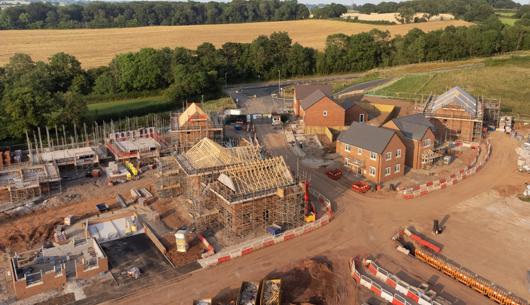Gavin Williamson provides clear indication of the Government’s vision for a fully academised state school system
Gavin Williamson has a clear vision for the future of the state-funded school system and that is for every school to be part of a family of schools in a strong multi-academy trust.
Gavin Williamson has a clear vision for the future of the state-funded school system and that is for every school to be part of a family of schools in a strong multi-academy trust. This was the message from his speech to the Confederation of School Trusts (CST) on 28 April and in the contemporaneously released Department for Education (DfE) guidance “Building Stronger Trusts”.
For any schools considering becoming an academy (and academy trusts looking to expand), these comments will be very welcome and a clear indication that the Government is committed to a fully academised state school system.
2020 was a turbulent year for schools, with the DfE, local authorities and school leaders grappling not only with the devastating human impact of the pandemic but also an ever-changing landscape of temporary school closures, re-openings and the daily challenges of supporting the education and grading of students in unprecedented circumstances. Understandably, changes to school structures took a back seat and academy conversions fell significantly in the 12 months following March 2020.
The speech by the Secretary of State for Education went beyond simply supporting the academy system and asserted that we need to move away from the current pick-and-mix structure and towards a single model. Although he fell short of suggesting a compulsory conversion approach, he confirmed he was actively looking at ways to achieve this vision.
The rationale for this endorsement of the academy system was a commitment to the belief that the strongest leaders can take responsibility for supporting more schools, developing staff, allowing schools to focus on teaching and ultimately bringing about improved outcomes for students.
The thread through the speech was the impact of strong governance across groups of schools, which has the potential to bring about a greater impact than, for example, school federations or alliances. This point was reinforced with the confirmation that the Government does not consider single-entity schools a viable proposition. The future is likely to be the growth of academy trusts through mergers or conversion of schools into the existing trusts.
This latter point of the growth of trusts is echoed in the guidance. It is not only clear that standalone academy trusts are unlikely to be approved but that new multi-academy trusts are likely to be approved only if they are in areas of need and where standards are low. Standalone academy trusts or groups of maintained schools looking to create new multi-academy trusts therefore need to be aware of the challenges ahead.
How will this vision be achieved? Gavin Williamson announced several measures to support the growth of strong academy trusts. These include: an increase in the Trust Capacity Fund from £17m to £24m; an update to the Academies Financial Handbook to provide greater clarity on the guidance; and a partnership with the Church of England and the Catholic Church to set up new Church Academy Trusts.
There were a couple of additional initiatives likely to be of particular interest to maintained schools, albeit for different reasons. The first is the expansion of the ‘try before you buy’ option or Trust Partnership. This is an arrangement where maintained schools and academy trusts enter into an arrangement whereby the school receives support from the trust as if it were a member of the trust in order to see if the arrangement should become permanent. In some circumstances, small grants may become available to support such partnerships.
Although such arrangements have been available before, they have not been universally adopted and they depend very much on the willingness of the trust to provide a significant level of openness and support without any commitment from the maintained school.
The second initiative relates to schools that have been judged ‘Requires Improvement’ (or worse) by Ofsted in their last three consecutive full inspections. The Secretary of State indicated an intention to bring such schools into multi-academy trusts and confirmed that further details would be available in due course.
Those who have been watching the Government’s changing approach to forced academisation will remember that in May 2018 the then Secretary of State for Education, Damian Hinds, announced in his speech to the NAHT that only an Ofsted ‘Inadequate’ judgment would lead to a forced academisation. It looks like this position may be about to change, at least for repeated under-performance.
The Secretary of State was all too aware that by no means are all academy trusts outstanding performers, but he is of the view that they have the potential to bring about improved pupil outcomes through strong governance, the development of talented leaders and teachers, and the ability to benefit from greater efficiencies.
For some time now it has not been unreasonable for schools to have some doubt as to whether the academy system would expand at the same rate as previously. The general election in December 2019 (and the lead up to it), changes in personnel at Secretary of State level and then the pandemic all combined to muddy the waters somewhat on policy for school structures.
Whether or not you support the expansion of the academy system, it is helpful for the education sector to have a clear understanding of the Government’s vision and expectations for the future of the state-funded school system.
Contact

Mark Hickson
Head of Business Development
onlineteaminbox@brownejacobson.com
+44 (0)370 270 6000







































